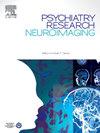经颅直流电刺激增强暴露和反应预防的随机对照试验方案,反馈告知干预后维持强迫症的收益
IF 2.1
4区 医学
Q3 CLINICAL NEUROLOGY
引用次数: 0
摘要
背景:研究经颅直流电刺激(tDCS)增强暴露反应预防(ERP)益处的病例研究显示,强迫症(OCD)症状的临床显著改善。在没有控制条件的情况下,这些发现的有效性需要进一步研究。还需要努力延长任何成果的持续时间。方法:本文提出了一项试点随机对照试验(RCT)的方案,该方案将:(1)检查结合tDCS和ERP治疗强迫症的双重方案方法的疗效和寿命,(2)试点个性化反馈知情的强化治疗方案,以长期维持强迫症的收益。在最初的10个疗程(4周)的治疗方案和干预后6个月的维持阶段,提出了一种双盲受试者设计来评估两种情况下干预前和干预后的收益。根据强迫症的额纹状体模型,tDCS将包括针对眶额额皮质(阴极)和前辅助运动区(阳极)进行20分钟的2毫安刺激。本研究的主要结果是强迫症症状严重程度的变化(耶鲁-布朗强迫症量表;YBOCS)。次要结局包括抑郁、焦虑、生活质量、神经认知功能(抑制控制和认知灵活性)和治疗可接受性的改变。结论本研究的结果将通过证明tDCS增强ERP治疗强迫症的有效性,以及是否可以通过反馈信息加强治疗来维持治疗效果,从而为治疗方法提供信息。本文章由计算机程序翻译,如有差异,请以英文原文为准。
Protocol for a randomised controlled pilot trial for transcranial direct current stimulation enhanced exposure and response prevention with feedback informed post-intervention maintenance of gains for obsessive compulsive disorder
Background
Case studies examining the benefits of transcranial direct current stimulation (tDCS) enhanced exposure response prevention (ERP) reveal clinically significant improvements in symptoms of obsessive-compulsive disorder (OCD). In the absence of control conditions, the validity of these findings requires further study. Efforts are also needed to enhance the longevity of any gains.
Methods
This paper presents the protocol for a pilot randomised controlled trial (RCT) that will, (1) examine the efficacy and longevity of a dual protocol approach combining tDCS and ERP for the treatment of OCD, and (2) pilot a personalised feedback-informed booster treatment protocol for the long-term maintenance of OCD gains. A double-blind between-subjects design is proposed to evaluate pre to post intervention gains in both conditions across an initial 10 session (4 weeks) treatment protocol and 6-month post intervention maintenance phase. tDCS will involve 20 minutes of 2 mA stimulation targeting the orbitofrontal cortex (cathode) and Pre-supplementary Motor Area (anode) as per the frontostriatal model of OCD. The primary outcome of this study is changes in OCD symptom severity (Yale-Brown Obsessive Compulsive Scale; YBOCS). Secondary outcomes include changes in depression, anxiety, quality of life, neurocognitive function (inhibitory control and cognitive flexibility), and treatment acceptability.
Conclusion
The findings of this study will inform treatment approaches by demonstrating the efficacy of tDCS enhanced ERP for the treatment of OCD, and whether any treatment gains can be maintained with feedback-informed booster treatment sessions.
求助全文
通过发布文献求助,成功后即可免费获取论文全文。
去求助
来源期刊
CiteScore
3.80
自引率
0.00%
发文量
86
审稿时长
22.5 weeks
期刊介绍:
The Neuroimaging section of Psychiatry Research publishes manuscripts on positron emission tomography, magnetic resonance imaging, computerized electroencephalographic topography, regional cerebral blood flow, computed tomography, magnetoencephalography, autoradiography, post-mortem regional analyses, and other imaging techniques. Reports concerning results in psychiatric disorders, dementias, and the effects of behaviorial tasks and pharmacological treatments are featured. We also invite manuscripts on the methods of obtaining images and computer processing of the images themselves. Selected case reports are also published.

 求助内容:
求助内容: 应助结果提醒方式:
应助结果提醒方式:


